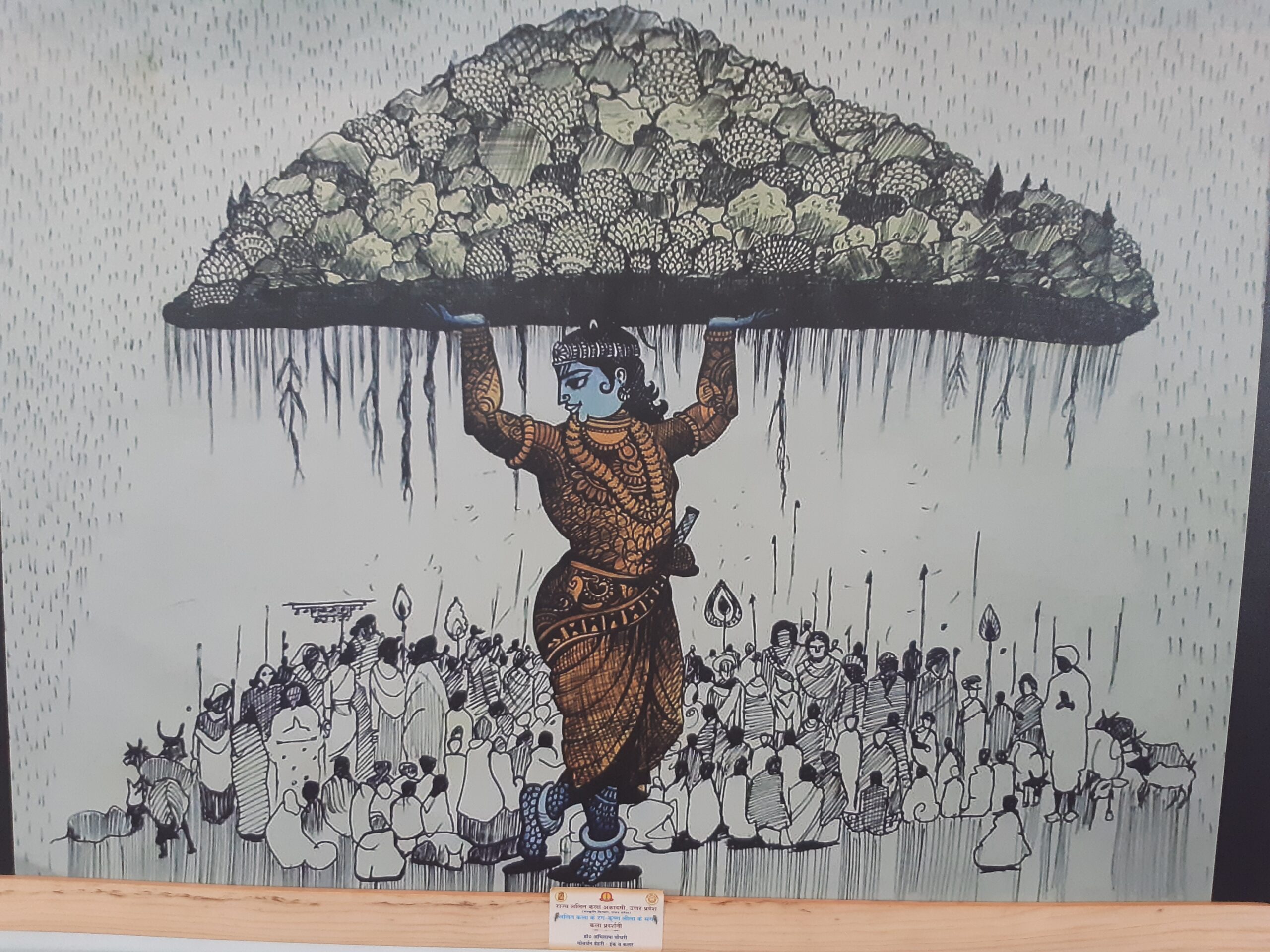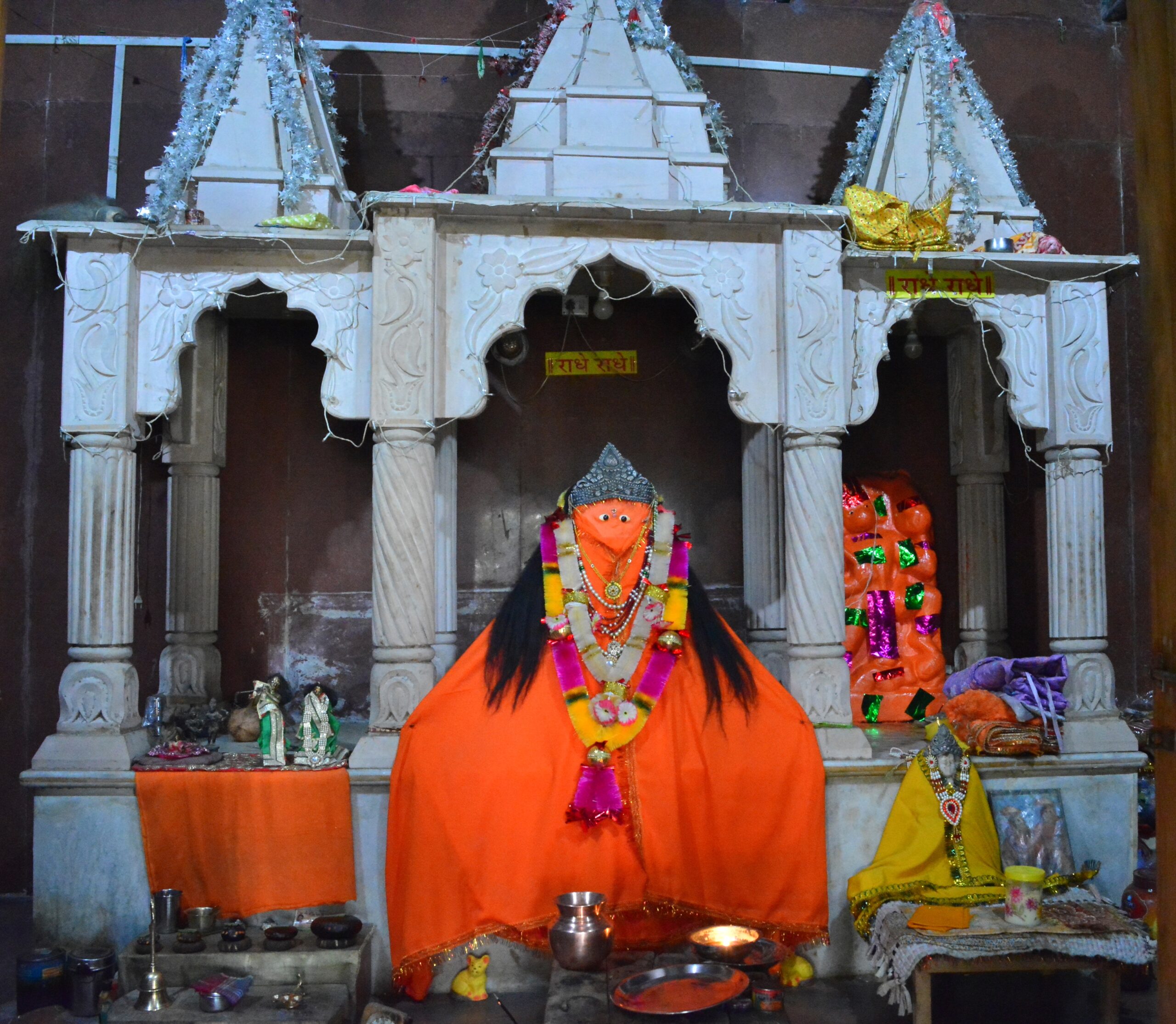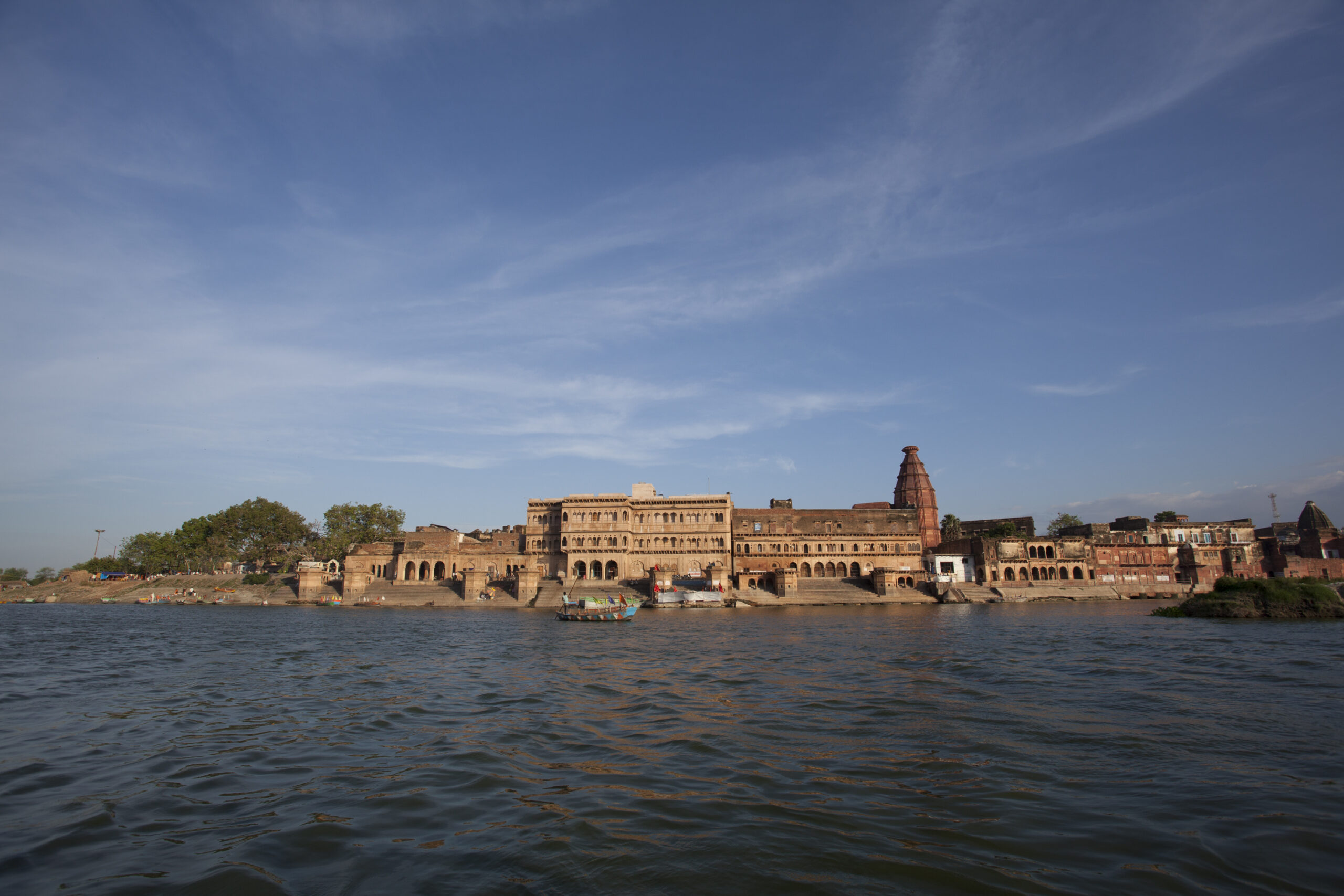(Excerpts from the lecture of Pujyapad Acharya Shrivatsa Goswami Maharaj): When Krishna played his flute to call the cows, the river stopped flowing, her waters stunned with ecstasy. Instead of swimming or flying, the cranes, swans, ducks and other birds closed their eyes and entered a trance. The cows and deer stopped chewing, their ears raised. They became motionless like painted animals.
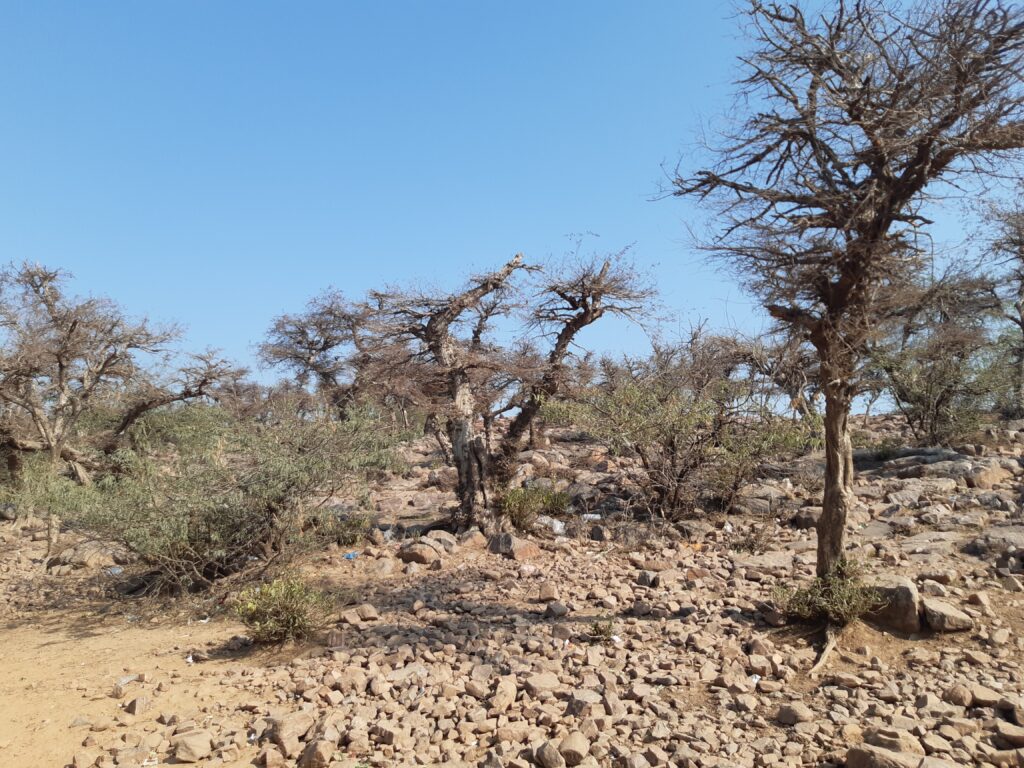
From Srimad Bhagavatam 10.35
Unlike Vishnu, who is God in the city of opulence, adored and served with reverence and awe by thousands of servants, Krishna dances with the peacocks, splashes in the river, plays the bamboo flute and spends his time with his friends in the forest herding cows.
At the very beginning of his life on earth, Krishna left the city of Mathura in order to live in the forest with the cowherds. Krishna is God living in simplicity in the forest. There are no stories of Krishna creating. In order to create, Krishna becomes Vishnu. They are both the same God, but Krishna does not personally involve himself in controlling the affairs of the universe – he prefers to stay in the forest as a cowherd boy. For this reason Srivatsa maintains that one who is devoted to Krishna could never be callous towards the environment, because Krishna himself loves nature. What Krishna loves his devotee also loves.
There were only two recorded occasions when Krishna performed formal religious worship. The first occasion was when he worshipped Govardhan Hill in Vrindavan.
“In the Srimad Bhagvatam the description given of this event is the essence of Hindu philosophy. Krishna and Balarama were coming home with the cows at dusk. They saw all the elders gathered on the doorstep of their house arranging for a festival to worship Indra. They asked their father what was going on, but he replied, “This is not your business – you go inside and eat”.
“So Krishna went inside and told his mother that he would not eat anything. Eventually his father relented and called him back to explain what they were all doing. He said, “We are people whose livelihood is based on agriculture. We trade in the produce of the land and the cows, both of which depend on rainwater. Indra is the lord of water. The rain clouds are his agents, so we have to pay him tax. Every year we arrange this festival”.
“Krishna replied in a much unexpected way. He denounced the cowherd men’s act of religious worship. He said, “All creatures are born by force of karma. By force of karma alone they die. By force of karma they experience pleasure and pain. If there is any God who dispenses the fruit of other actions, he only rewards or punishes us according to our actions. Therefore don’t make a show of worshipping Indra, because by the law of karma you are in control of your own destiny”.
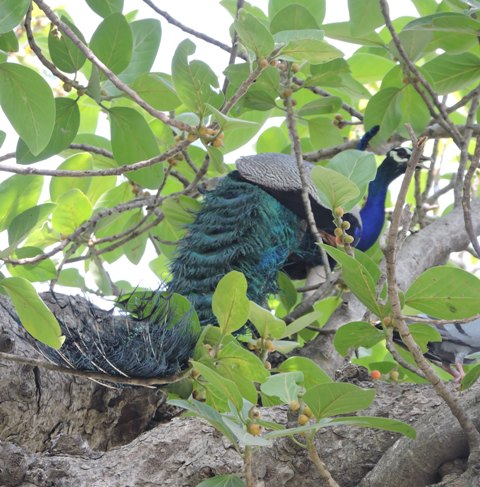
Krishna spoke like this to shock his father and the cowherd men. He wanted to teach them that they were all responsible for their own actions. The law of karma is that by our practical actions we create our future, good or bad. It was therefore more important to care for the hills and cows, and Krishna, than to worship Indra.
“This is the key to the environmental problem today. We depend of others – government agencies, the US Environmental Fund, or some local civil government – to do something; we shift the responsibility to somebody else when all the time it is us who are responsible for our own predicament, Krishna spoke like this to destroy the ignorance of his own people, saying, “Your environment is your concern, it is your duty”.
In the words of the Srimad Bhagavatam:
“My dear father, our home is not in the cities or towns or villages. Being forest dwellers, we always live in the forest and among the hills. Therefore begin a festival in honor of the cows, the brahmins, and Govardhana Hill.”
“Then Krishna went with them and worshipped the hill. In order to convince them, he assumed a gigantic mystical form and merged himself with the hill, demanding, ‘Feed me more!’ He asked for the worship to be given equally to the mountain, the cows and the brahmanas as well as him”.
By this incident Krishna taught that it was better to worship the hills, forest and cows than to perform a ritual for the demigods. But He also showed that He was present in the hill, and that by worshipping Govardhana Hill they were worshipping him. Since that time Govardhana Hill has been worshipped by the local people as a form of Krishna.
The second time Krishna performed organized worship was when he worshipped the Sun god:
“Krishna’s son Sambha once got leprosy. Krishna advised that, rather than try to treat his disease themselves, they should get it treated by the sun-god. This is the history of the famous sun temple at konarak in Orissa – where his son was treated. These are the two occasions when Krishna worshipped: one was mountain, the other was sun”.
“Elsewhere Krishna cleaned the river. He defeated the serpent Kaliya and purified the Yamuna river. He swallowed the forest fire to protect the forest. He looked after the cows. He spoke to the birds in their own language. Krishna was always protecting nature”. Krishna lived as a child among twelve forests of Vrindavan. The trees were His friends. Whenever the sun was too hot he would lie beneath a tree with a root for a pillow, shaded by its outstretched branches. The branches of the trees would bend down low, offering their fruits to Krishna, and trying to touch the ground at His feet. In their previous lives, the trees had been great philosophers. They had now taken birth as trees in the forests of Vrindavan to become purified and have their chance to serve Krishna.
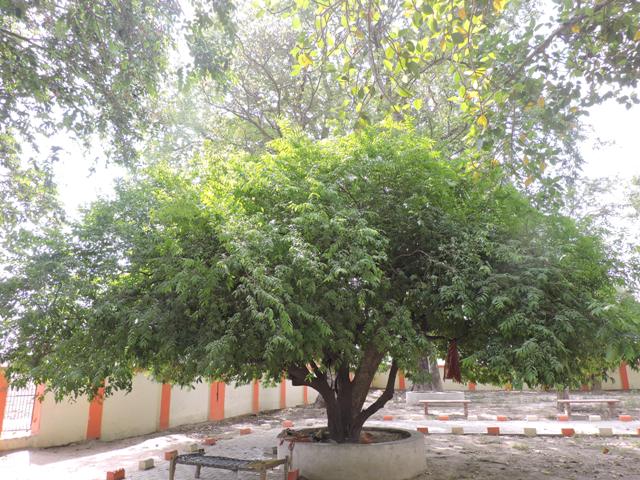
Today in the heart of Vrindavan, the forest area where Krishna played stands a small grove of trees called Seva Kunj. Some of the trees here are said to have witnessed the dancing of Krishna five thousand years ago. They are revered as great soul, devotees of Krishna.
It is sad that the great forests, such holy places for the Hindu, have now all but disappeared. No longer do the hillsides of Vrindavan resound with the cries of the peacocks perched in the branches, no longer can one sit beneath the cool shade of the groves of bael, mango and tamal trees and watch the parrots and forests animals dart from tree to tree as Krishna once did. The lush undergrowth of Tulasi and forest flowers which provided Krishna’s garlands, once sheltered by the trees, is now unable to suvive the hot rays of the sun. Without the trees the land of Vrindavan has become parched and dusty, unable to hold the moisture from the rare rainfall or the morning dew.
When Krishna grew up and left Vrindavan, His childhood girlfriends, the gopis, were beside themselves with grief. In their madness of love they used to mistake the Tamal trees, which had the same dark color as Krishna, for their own beloved and embrace the trunks of the trees exactly as if they were Krsihna. Now the trees themselves are disappearing. Where ever the trees have gone the damage to the natural environment is almost irreversible. An arid, stony landscape remains which cannot hold water or nourish plants. This scene is becoming widespread throughout India. Yet the Vedic scriptures teach that trees must be protected, as must all species that live on the land.
Human society has the responsibility to see to the welfare of all. Krishna, by his own example, rejected the ritualistic worship of a ‘God in the clouds’ in favor of an earth based religion which recognized the sacred in the everyday relationships between human beings and their environment. To live in harmony with nature, to show love to all creatures, never harm any living being, to rejoice in the beauty of a natural life of simplicity, this was Krishna’s practice of religion.
The best way to teach environmental concern in through Krishna’s life. We must have films, dramas, folk plays, all based on this lila. Krishna is the only savior of the environment – that is the sum total


